
Would you like to start a conversation with other industry leaders to brainstorm a challenge or to just know more on a particular topic?
Engage in online discussions with your Peers
Start NowImagine you are travelling on a Saturday afternoon. You feel hungry and you stop by a pizzeria to order a pizza. Within few minutes a fresh, hot and delicious pizza arrives. You satiate your hunger and continue with your journey happily. What if the pizza took an hour to arrive or you were served the wrong order? You would have been rather disappointed, or even upset. To provide a remarkable customer experience it is critical to be both prompt and accurate. IT Services cannot be an exception to that rule.
IT effectiveness is directly proportional to the user or customer satisfaction, which is key to the success of IT function.
Taking inspiration from the above but not limited to such best practices, the Service Management team at Syngenta Global Delivery Center has consistently delivered results much better than the industry standards and transformed itself into a Center of Excellence in a remarkably short span of time.
The Background
A legacy IT Service Management (ITSM) tool was used in Syngenta for many years. This tool was being used by 40,000+ Syngenta identities, including suppliers across globe (EAME, NA, LATAM, APAC), serving all IT related support services. Most of the users were unhappy with this tool and there were huge costs being incurred for its support and usage. Overall, there were quite a few challenges with the legacy ITSM environment, such as:
- It was heavily customized and no tangible benefits
- Its inability for end-to-end delivery of IT services, including project governance and documentation
- Lacked a single interface with a single source of record
- Lacked a user friendly client interface & self-service capabilities
- Reporting needed a lot of customization and was not very flexible
- Carried a high costs for license, upgrades and support
- Was lacking of efficient knowledge repositories
- Had poor vendor services
The Service Management team at Syngenta Global Delivery Center
has consistently delivered results much better than the industry
standard since last couple of years and transformed itself into a Center
of Excellence in a short span of time.
Clearly it was time to seek out alternative options. Extensive study and current industry standards helped us to choose ServiceNow (Modern SM tool) as our global Service Management platform.
The expectation was to extend its capabilities to all business functions (HR, Finance, etc.) within Syngenta Business Services and enable a ‘One Stop Shop’ for all services.
The Mission
The journey started with selecting the right methodology for the ITSM platform and tool management. Traditional methodologies pose many challenges in terms of cost, customer satisfaction and agility. They fail to measure up to the expectations of the customers in terms of speed and flexibility, thus compromising on the user experience. The new platform would have to counter these lacunas and cover people, process and technology from scratch. To do this effectively one had to use the best technology available and implement Dev-Ops methodology. Dev-Ops methodology puts the customer first and offers significantly better quality, improved efficiency, more reliable releases and above all saving on cost and time.
The Ambition
A clear statement of ambition set the direction. Extensive research and benchmarking was done. While the implementation was on, peer implementations too were studied. The team at Syngenta Global Delivery Center set up the Dev-Ops function following the vision set up by the Management. Based on the success of the local team, the team was expanded to global locations like Manchester UK and Basel, Switzerland. The Dev-Ops team was set up in Dec 2015 for the tool as well as Service Management. Within almost 6 months of its inception a Center of Excellence for the service covering the Technology, Process and related Consultancy was functional.
The service was shaped as user-centric to aid the related service transformation, leading to simplification and ease of use for the clients. This capability for technology management also created a foundation for Service Integration and Management (SIAM). The team had become a proud pioneer of the same within the organization.
Our Vision
To create an Internal Capability to deliver superior technical services to our customers using an integrated, flexible and modular approach
The Concept
One can find a striking commonality between Object Oriented Programming concepts and the nature of the Dev-Ops function. The behavior of the different elements are carefully designed and accordingly the structure created. In the diagram below, right hand side of the cube represents Operations part of Dev-Ops where inputs like incidents or service disruptions get converted to service restorations.
The incidents or service requests get fixed into respective production client(s) and represent the reactive part of service. The problem management tickets and updates to knowledge management end up in the implementation of proactive part of service operations.
The left hand side of the cube represents the Dev part of Dev-Ops. The user stories are the inputs which get converted to implemented functionalities in the production client to serve business as per their requirements. All the requests passing through the cube are governed by a governance board represented by all the relevant stakeholders. The top sphere on the cube represents the Steering Committee for setting up the strategic direction and to finance the project.
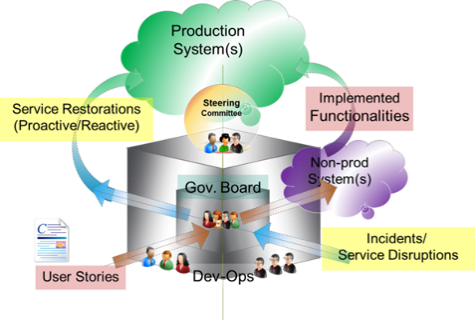
Figure 1.1: Dev-Ops and Polymorphism; the function behaves differently for different inputs with relevant outputs in the production system(s)
The Transformation
As the CoE (entire function) was being created from scratch, almost all the elements in the context were defined anew. At the beginning, only tool administration was put in place. The support model was setup to serve clients globally in their respective time zones by the central team working in shifts. It started with IT Operations Management (ITOM) by supporting the implemented IT Infrastructure Library (ITIL) processes for the company. The operations and development teams were finally set up, led by an operations lead and a solution designer respectively.
Dev-Ops – Journey Towards SIAM
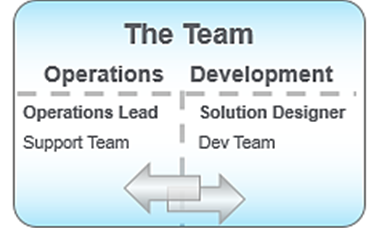
Figure 1.2: The Dev-Ops Concept
Importance was given for cross sharing the knowledge and internal training and growth of the resources. Some of the highlights were:
- Seamless integration between day-to-day operations, support & development
- Highly innovated team
- Very lean approach
- Faster turnaround
- Higher CSAT
- Retaining the knowledge by in-house solution design
The Governance Structure
A governance mechanism was set up at two levels:
- At the product level a Steering Committee (SC) was put in place to set the strategic direction for the tool. This committee consisted of some of the most senior members like CIO, SBS head, Global Finance Services Head, Global HR Services Head, Global Delivery Excellence Head, and so on. This committee was to provide the finance and support the organizational change management from the top, amongst other things.
- Operational governance was put in place by setting up a Governance Board (GB). It consisted of members from different business units, Client Service Management, Global Service Desk, Application Support, Infrastructure Support teams and so on. The GB provided approvals for small changes and small projects. The requests got discussed within the GB in the form of user stories. Healthy debate and dialog was encouraged between the members.
ServiceNow (SM Tool) Dev-Ops Getting into Details....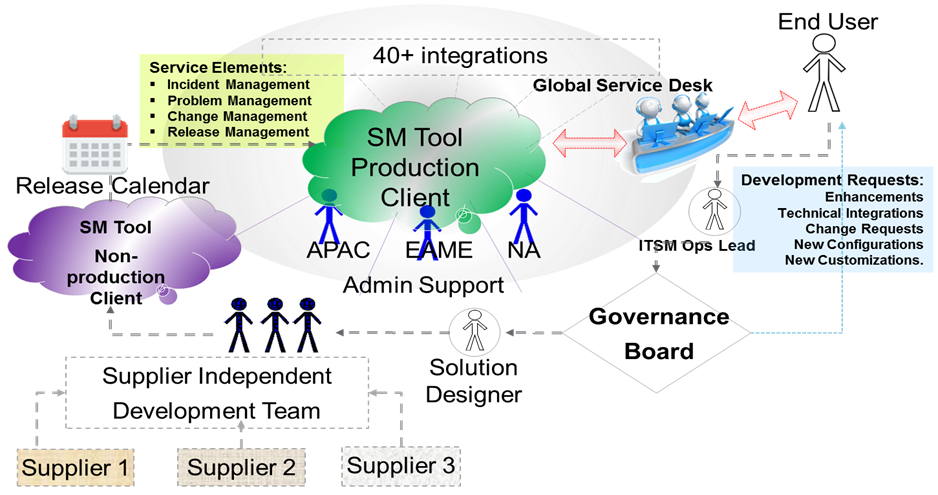
Figure 2.1: Governance Board run by Solution Designer, Dual hatting as a Scrum Master
The Operations
Any user on the company network could submit an idea, enhancement or a change request through a catalogue item as a user story.
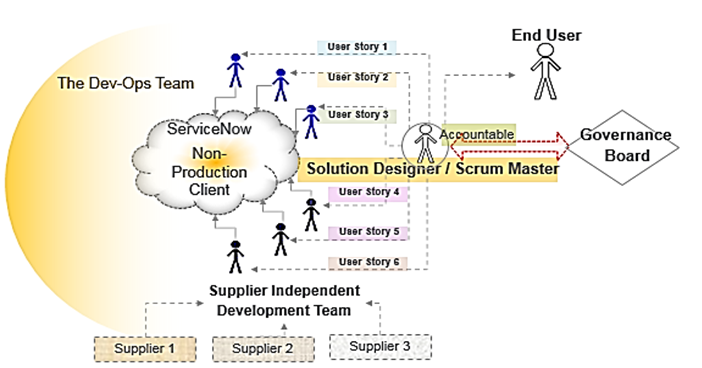
Figure 2.2 : Solution Designer distributes the work in the form of user stories, can choose best talent for development and has a full control over the development and deployable being developed.
All the requests would get scrutinized by Operations Lead. If necessary, he could get into a one-on-one discussion with requestor to get more details.
Once approved by Operations Lead the story would move to the GB for debate run by the Solution Designer. After due approvals from the GB, the Solution Designer would prepare possible solutions based on one or more user stories. If necessary Solution Designer would create/ fine tune the user stories to distribute it to the appropriate teams to develop and test.
Once the user story is ready after testing, the Solution Designer would integrate the same to create a deliverable. If necessary, further rounds of testing would be carried out. Solution Designer could also select appropriate resources for testing as well.
Using this methodology, the Solution Designer would have the complete accountability of the tool blueprint and the technical knowhow remains in-house. Development happens in modules ensuring freedom from any single resource or supplier.
Building a Services Management Capability
The following figure shows capability development services that were delivered across functions, across geographies by using the Center of Excellence.
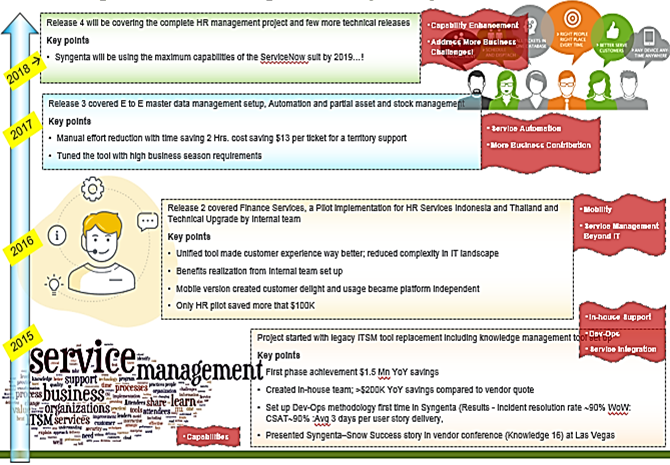
The Achievement
This unique function is delivering astounding results. A supplier independent and vendor neutral framework is delivering information technology service to business in a most agile way. This framework can be adopted to work with most cloud based tools and platforms. It has enormous benefits and can be extended to broader IT community.
The Outcome
Best of All Worlds
There were several examples of successful outcomes, strategic and tactical, related to the service.
It can help IT functions to reduce corporate cost and at the same time increase agility, customer satisfaction and employee satisfaction. Above all, it reduces the dependency on suppliers and by retaining the knowledge within the organization.
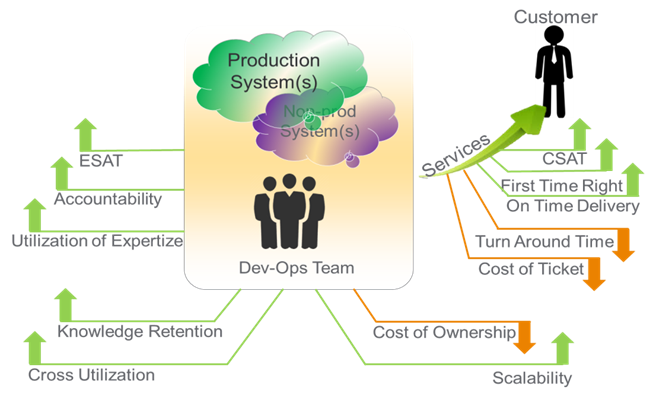
The following table shows how the Quantitative and Qualitative results converted in company’s favour.
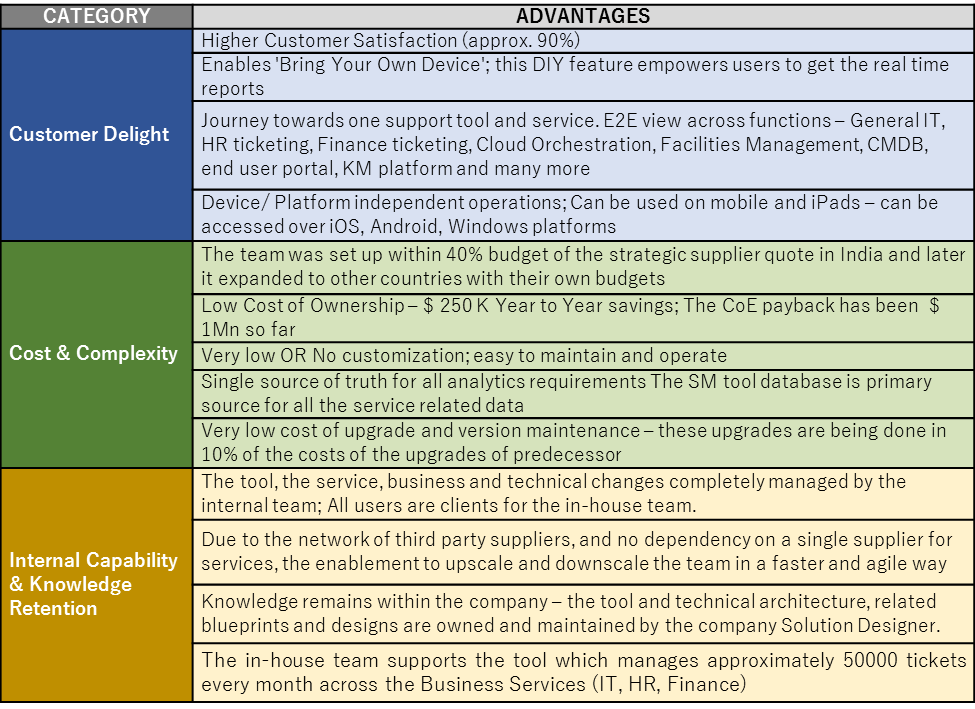
The Turnaround
Technical services suppliers are integral part of the eco-system we operate in. As a part of this journey we were able to set up a framework of third party technology services suppliers who work in niche technologies. This has helped us to create a supplier independent service. Another advantage of this framework was to get the best resource to develop required user stories. This has enabled us to upscale and downscale the team quickly, as required by the situation. A robust and scalable platform was created to deliver and manage end-to-end delivery of IT services, including project governance and documentation. This platform is being used across the functions of the organization (IT, HR, Finance, etc.). A negligible level of customization was allowed on the tool to maintain the sanctity of production client. This has helped in getting the tool version(s) upgraded under control by reducing cost of ownership. Further, this gave rise to an in-house Knowledge Management Platform which could be converted to Innovation Management Platform with a small effort.
The team has proven the capability to lead and be a role model to all the insourcing CoEs in the company.
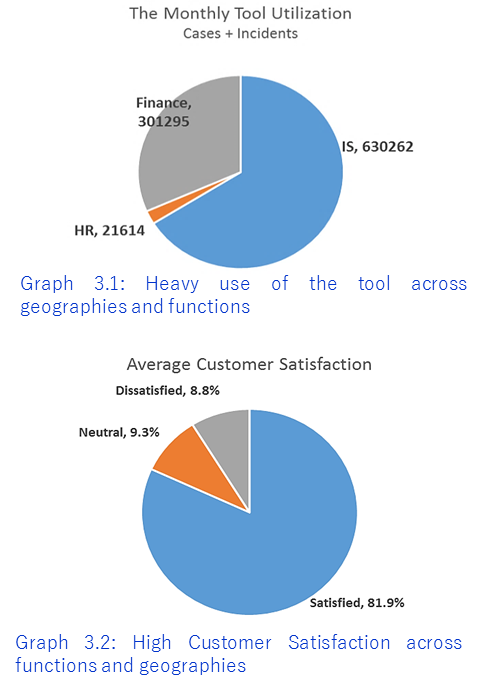
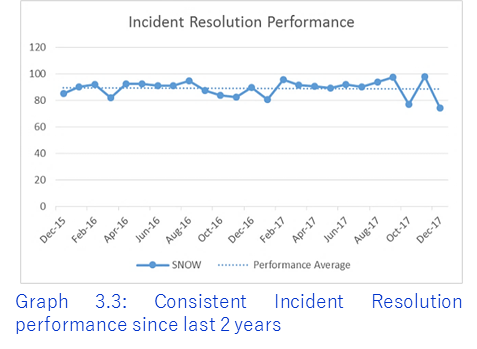
What Next?
Following the success of the SM tool CoE, several possibilities have opened up following the same principles. Security Operations CoE and Identity and Access Management CoE are two areas which are being pursued actively. This framework is now being promoted as an open framework by the Open Group organisation to be used by the wider Service Management community by customizing and adopting to the individual needs. The Group has awarded us Presidents award in the category ’Innovation and Excellence’. They are also planning to create case study to showcase this achievement.
ABOUT THE AUTHOR
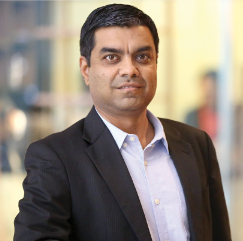
Anand Rajhans has over two decades of experience in Information Technology industry.In his experience he was instrumental in establishing I.T. delivery teams for large international MNCs in India and Europe. He is an electronics engineer and a product designer from IIT Mumbai with MBA degree from Erasmus University, Netherlands.
Anand has demonstrated expertize in end to end implementations of various business solutions and major transformations to enhance client experience and business productivity. He has worked with many of the world’s largest brands including Jaguar Land Rover, Tata Motors, Syngenta, DHL, ABN AMRO, Thomas Cook, Microsoft, Pratt and Whitney, General Electric, KLM Cargo and many more.<br>He is also the Winner of the IT Next 100 CIO Award, 2017.




